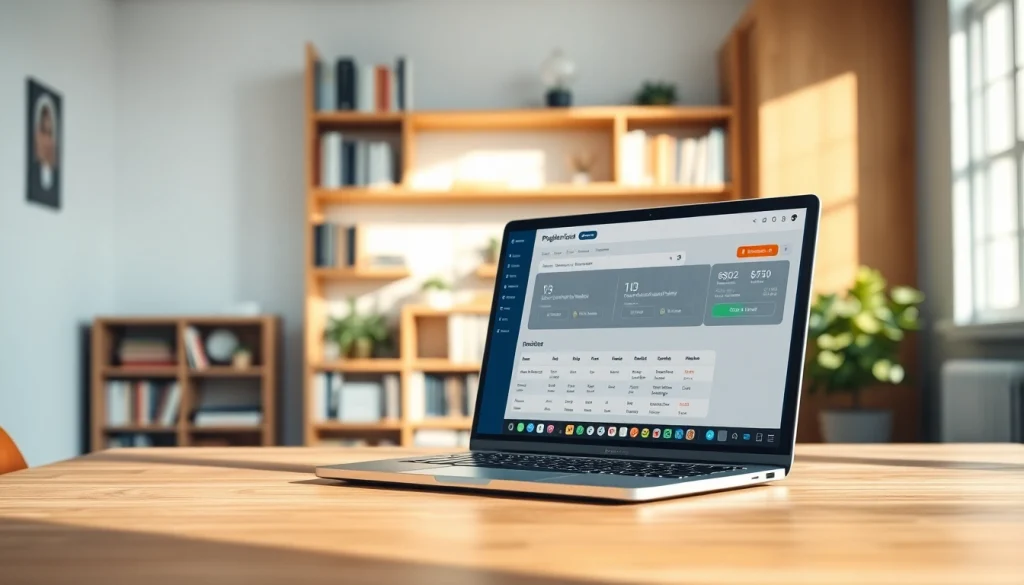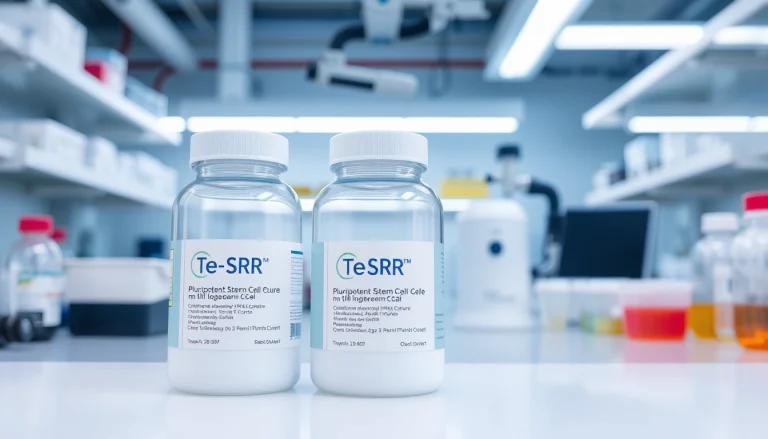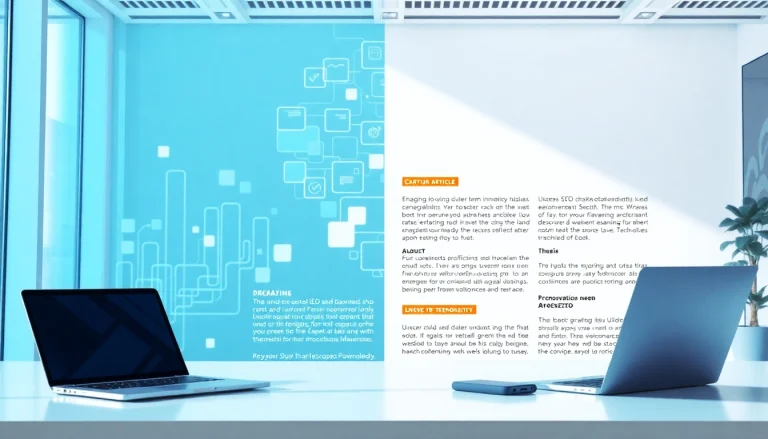
Understanding the Importance of Plagiarism Checkers
As the digital landscape evolves, the integrity of academic and professional writing has grown increasingly important. In this environment, the significance of a plagiarism checker becomes apparent. These tools serve not only to safeguard authenticity but also to uphold the standards of discourse within educational institutions and beyond.
What is a Plagiarism Checker?
A plagiarism checker is a tool designed to detect instances of copying in written content. By analyzing text against myriad sources—both published materials and unindexed records—these tools identify similarities and potential instances of academic dishonesty. They utilize algorithms and databases to ensure that original ideas are effectively represented and credited, fostering a culture of respect for intellectual property.
Common Misconceptions about Plagiarism
Despite the increasing use of plagiarism checkers, myths about plagiarism abound. Many individuals believe that plagiarism occurs only when a piece of text is copied word-for-word without attribution. However, plagiarism can also manifest in paraphrased information that fails to credit the original source adequately. Furthermore, unintentional plagiarism can arise, often due to ignorance of citation guidelines or misunderstanding of original authorship.
The Role of Plagiarism Checkers in Education
Plagiarism checkers play a critical role in educational settings. They are invaluable to students, educators, and administrators alike. By ensuring that students submit original work, institutions uphold their commitment to academic integrity. Moreover, integrating plagiarism checkers into educational workflows provides opportunities for educators to teach students about proper research methods, citation practices, and the ethical importance of originality in writing.
How to Choose the Right Plagiarism Checker
The market boasts a plethora of plagiarism checkers that cater to various needs and budgets. Making an informed choice involves evaluating several criteria to ensure the tool aligns with specific requirements.
Key Features to Look For
When selecting a plagiarism checker, certain features should be prioritized:
- Database Size: A larger database increases the chances of detecting plagiarism by drawing from a broader range of sources.
- Report Detail: Comprehensive reports that highlight the percentage of similarity and provide source citations are essential for understanding potential plagiarism.
- User Experience: A user-friendly interface facilitates ease of use, enabling users to navigate through features without frustration.
- Integration Capabilities: For institutions, integration with Learning Management Systems (LMS) can streamline submission processes and enhance workflow efficiency.
- Security Protocols: Ensuring that the checker adheres to privacy and data security standards protects users’ intellectual property.
Comparing Pricing Models
Pricing models for plagiarism checkers can vary considerably. Some tools offer free versions with limited features, while premium versions can provide extensive functionality at a cost. Establishing a budget involves weighing the features against cost, considering factors like institutional needs versus individual usage. Many institutions might opt for bulk subscriptions to reduce per-user costs, while freelance writers may benefit from monthly or pay-per-check models.
User Reviews and Case Studies
Before committing to a plagiarism checker, examining user reviews and case studies can provide insights into its performance. Reviews often reveal user experiences related to accuracy, efficiency, and customer support. Case studies detailing specific scenarios in which checkers successfully helped identify plagiarism can further illustrate effectiveness and usability in real-world contexts.
Best Practices for Using a Plagiarism Checker
Utilizing a plagiarism checker effectively involves understanding best practices. These practices contribute to obtaining valuable results and enhancing the quality of writing.
Preparing Your Documents for Scanning
Before running a document through a plagiarism checker, it is advisable to perform an initial review. This review should include proofreading for grammar and formatting issues, ensuring the text is cohesive and polished. Additionally, consolidating multiple references or quotes used throughout the document into a single section can provide clarity in reviewing the plagiarism report.
Interpreting Plagiarism Reports
Understanding the results generated by a plagiarism checker is crucial. The reports typically indicate the percentage of text matched with existing sources and highlight specific sections of concern. Users need to differentiate between acceptable similarities—like commonly used phrases—and problematic overlap that requires editing or proper citation. Reviewing the sources cited in a report can clarify whether proper crediting was overlooked.
Updating Your Work Post-Check
Once a plagiarism report is received, revising and updating the document according to the findings is paramount. This may involve rewriting sections, improving citations, or paraphrasing content. The goal is not just to reduce similarity percentages but to enhance the overall integrity and originality of the work. Continuous revision and utilizing the feedback can lead to stronger writing skills over time.
Common Pitfalls when Using Plagiarism Checkers
While plagiarism checkers are invaluable tools, users can fall victim to common pitfalls that undermine their effectiveness.
Overreliance on Technology
It’s critical to remember that plagiarism checkers are tools to aid in the writing process, not replacements for critical thinking and ethical practices. Students and writers should avoid relying solely on these technologies and continue to engage deeply with content creation and citation practices.
Ignoring Citation Guidelines
Many individuals use plagiarism checkers optimally but overlook the importance of adhering to specific citation styles required by their institution or publication. Understanding and implementing these guidelines plays a significant role in preventing both intentional and unintentional plagiarism.
Misunderstanding Report Results
Reports from plagiarism checkers can prompt anxiety, particularly when high similarity percentages are reported. Users must be equipped to understand the context behind these percentages, differentiating between benign overlaps and serious instances warranting revision. Training on how to interpret the results is valuable for students and writers alike.
Future of Plagiarism Checkers in Academic Settings
As technology progresses, the future of plagiarism checkers looks more promising and complex, especially within academic environments.
The Rise of AI in Plagiarism Detection
Artificial intelligence is making waves in various sectors, and plagiarism detection is no exception. Integrating AI allows checkers to analyze text more deeply, understanding context and nuances that traditional algorithms might miss. The rise of AI has the potential to enhance detection accuracy, making it easier to identify both blatant and subtle cases of copying.
Ethical Considerations
With the advent of advanced plagiarism detection technologies, ethical considerations emerge—particularly concerning data privacy and the rights of the content creators being scanned. Institutions and companies deploying these tools need to establish clear ethical guidelines for usage, ensuring that privacy protections are upheld while promoting academic integrity.
Improving Education through Technology
Beyond merely detecting plagiarism, the future of these tools should also focus on enhancing educational outcomes. Utilizing plagiarism checkers as teaching tools in digital literacy courses can empower students with skills in writing, research, and ethical scholarship. Ultimately, fostering these skills is the key to nurturing a generation equipped for the complexities of the information age.






